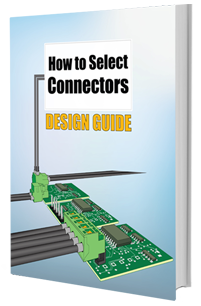Connector Design Guide
The basics of PCB connectors
An electronic system is a hierarchical interconnection network that enables communication among different electronic devices. Several interconnects are required for signal transmission and power distribution to ensure the correct operation of electric products. Electrical connectors are classified into three types with regard to their termination ends: board-to-board (B2B) connectors, wire-to-wire (W2W) connectors, and wire-to-board (W2B) connectors. The connectors are also classified based on the application like signal connectors, RF connectors, and power connectors. Signal connectors can be further classified as general-purpose, low-frequency, and high-frequency connectors such as USB, PCIe, etc.
Challenges of incorporating connectors in a system
Increasing signal speed and switching frequency demands stringent requirements from connectors. Primary issues while dealing with connectors are electrical length, need of a larger assembly area, compatibility with new technologies, and reliability.
A connector introduces an extra electrical path that can lead to added propagation delay and electrical noise, such as crosstalk.
A connector also raises concern for reliability, because degradation of the contact interface can lead to an increase in contact resistance, resulting in signal distortion, heating problems, and power loss. These losses increase due to contact resistance, which depends on the material properties of the connectors, environmental conditions, and mode of operation.
Additionally, since a connector occupies more area than a simple solder or adhesive, the use of connectors might be difficult in applications that have limited space.
We help you select the right connector and cover the following topics:
- Basics
- Terminology
- Selection and layout rules
- Testing
- Application-specific PCB connectors





